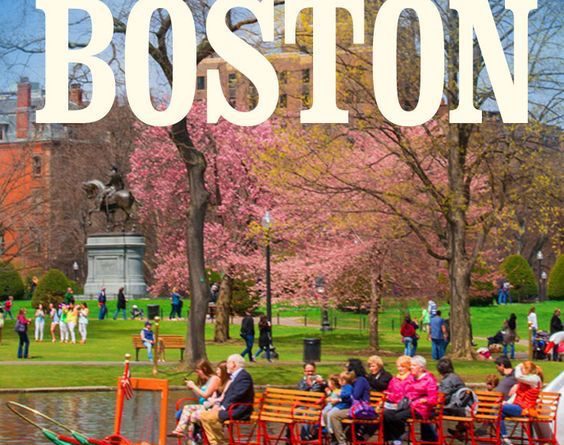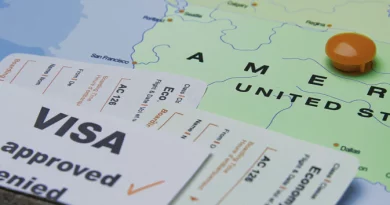Tourism in Western Europe: A Collection of Case Histories
Richard Voase provides an interesting collection of case studies regarding Western European tourism development. The case studies are well organized in three thematic areas based on political, economic, and socio-cultural contexts. The collection of stories communicates changes in tourism development and practices and reflects how tourism development seeks new ways of tourism thinking.
Voase concludes that tourism experiences, on the part of travelers, show signs of active decision-making with passive consumption. This point prompts the reader to think that tourists choose “canned” experiences that are creatively constructed, however, accessed through extensive information search and decision-making.
The case studies are authored by a variety of authors with strong local ties to the place they write about which enables extraordinary insight into issues the tourism industry faces in Europe and North America (although North America is not the focus of this book). This book can be used in a tourism development course to help students identify current issues in tourism (e.g., environmental challenges, sustainability, conservation approaches) and build upon definitions and theoretical models in tourism.
In his introduction, Voase conveys that the analysis or interpretation of the cases is based on political, economic, socio-cultural, and technological environments. The analysis captures the multidimensionality of the tourism product and the cultural and social factors that relate to current ideologies, which affect how tourism evolves.
Such ideologies are related to prevalent postmodernism approaches that seem to affect those consumer behaviors, which capture experiential consumption rather than production processes of products or services.
The book consists of eleven chapters. The first four chapters are approached through the lens of political context analysis. The first chapter, by Meethan, presents the role of tourism marketing and public policy in the counties of Devon and Cornwall, England. Meethan concludes that for these two counties “marketing was one aspect of a wider integrated policy which aims to incorporate tourism more fully into the regional economy” and these programs would not have been possible without the funding from the European Union (EU).
“The cases of Devon and Cornwall also demonstrate how new organizational forms emerge as a response to wider structural changes”.
Chapter 2, by Morpeth, focuses on the role of leisure and tourism as political instruments in Britain during the 1980s. Central and local governments used leisure and recreation policies as an extension of the urban policy to balance the negative effects of unemployment and structural problems evident in England in the 1980s. Morpeth discusses the case of the city of Middlesbrough and the role of Thatcherism policies on the city, which focused on the generation of inner cities and the use of tourism as a tool for regeneration.
Chapter 3, by Voase, discusses the influence of political, economic, and social change in a mature tourist destination; the Isle of Thanet in southeast England. Voase concludes that the process of policy, planning, and development of tourism in a mature destination is not always straightforward.
The antagonistic politics among the stakeholders involved in tourism development led to inconsistencies regarding the development of the destination. Chapter 4, by Robledo and Battle, focuses on Mallorca as a case study for replanting tourism development for a mature destination using Butler’s (1980) product life cycle concept. As a mature destination, Mallorca needs a sustainable development strategy to survive in the future.
This acknowledgment led the Tourism Ministry of the Balearics Island Government to establish a tourism supply-side regulation to protect the environment. This plan, however, as Robledo and Bade identified, is an interesting case of a struggle between different groups (i.e., government, ecological groups, councils, hoteliers, and construction industry) defending their interests in tourism development.
Voase identifies these first four chapters as having three common factors: the role and interplay of local tiers of government in the formulation and implementation of policy, the role of politics as a vehicle for the promotion and management of economic interests, and the powerful influence of socio-cultural factors.
While these common factors are not directly evident in the presented case studies, Voase fills that gap with his writings. These common factors can stimulate further discussion as to what is the role of politics in tourism and how policy can affect researchers and practitioners in the field.
The second part of the book focuses on the economic context of tourism and its use as a regeneration and wealth creation tool. Chapter 5, by Lewis, focuses on two agri-environmental schemes, Tir Cymen and Tir Gofal, and how they affected recreational access in rural Wales. This chapter presents how these schemes caused many changes in the agricultural practices in Wales.
These changes positively affected recreation opportunities in Wale’s agricultural landscape and changed relationships between “rural and urban and new demands for rural access, all of which now reflect the interdependence of environmental health, local social and economic needs, and access to land for recreation”.
Chapter 6, by Lindroth and Soisalon-Soinimen, discusses how a historic tourist product was developed in Loviisa, Finland. The goal of the tourism development was to create an image of Loviisa as a historic tourist destination and to create new products in alignment with the historic theme.
Lindroth and Soisalon-Soinimen identified that without the support of the tourist office, as well as the National Board of Antiquities, the development would not have progressed significantly. Also, the European Union funding helped with training and expert help. The professionals and project leaders involved in the process shaped the project through their enthusiastic actions described in detail in the case study.
Chapter 7, by Bohn and Elbe, describes the story of one man and how his vision for the municipality of Alvdalen, Sweden transformed the town into a tourist destination. The most important element in this story is that this man created a destination without being an expert in the field of tourism development.
He used the current notion of relationship marketing to achieve successful development without knowing its full value as a marketing tool. This chapter underlines also the importance of cooperation among stakeholders involved in tourism. Voase identifies factors that these three cases share: the role of the individual entrepreneur in developing the product, the consumption of natural resources, and tourism focusing on past heritage.
The third part of the book focuses on the socio-cultural context of tourism in four case studies. Chapter 8, by Finn, discusses the change of European football from being a fan’s sport to being a spectator’s sport. Finn identifies current sport marketing approaches, which construct a product, or experience where fans’ identity doesn’t fit with current “civilized” consumption processes, and instead, spectators’ identity fits with those images and procedures promoted by sports marketers inside and outside football stadiums.
Chapter 9, by Baron-Yelles, focuses on tourism and the politics of nature-based tourism and how the ‘Grand Site National at La Point du Raz” changed tourism provision services and infrastructure to accommodate tourists’ demands. In this chapter, the reader can observe trade-offs between natural resources and the provision of tourism experiences. This case study also shows how a destination responded to stakeholders’ opinions about coastal conservation, public access, and allowable visitation levels.
Chapter 10, by Lohmann and Mundt, focuses on maturing markets for cultural tourism in Germany. The chapter discusses how tourism shapes culture through the exchange of experiences between travelers and residents in a destination. Travel and tourism are discussed as constituents of culture. Lohmann and Mundt conclude travel has become an important part of people’s lives and in turn are exposed to other cultures, which can affect their own.
Chapter 11, by East and Luger, focuses on youth culture and tourism development in the Austrian mountains. East and Luger share interesting insights on youths’ reactions and behavioral adjustments toward tourists. They report that youth who are involved in tourism through family businesses tend to be more respectful of tourists. Youth in rural mountain areas were found to be interested in urban experiences.
Voase concludes these four final cases have three underlying themes. The first theme is that the consumption experience is staged or produced. This theme brings to mind MacCannell’s (1976) notion of front and backstage realities. The front stage is the presentation of a destination to visitors, whereas the backstage is the real or truer nature of a destination.
The second theme is that commercialization and commodification are not synonymous terms. The third theme is environments are often manipulated to influence people. Voase explains how sports environments have changed and caused spectators to also change.
Overall, this book is useful to practitioners and academics because it provides case studies offered by people with close connections to the tourism industry, thus providing an insider’s viewpoint. Voase, as both a practitioner in resort tourism marketing and an academic, effectively brings together case studies that focus on Western European tourism and communicates concepts that shift ‘old’ tourism principles to ‘new’.
His introductions of each collection of cases (i.e., economic, political, and socio-cultural) are insightful. Voase, however, does not discuss the introduction of the Euro currency in January 2002. This is an important change to the economic structure of all countries-members of the EU and their socio-cultural development. The interconnection of the EU countries through the common currency might create a feeling of a larger community, which potentially affects tourism through the cultural, social, political, and economic of EU member countries.
Finally, Voase’s concluding piece is insightful. His conclusions identify demographic, environmental, and consumer trends that will influence tourism in Western Europe during the 21st century. He concludes an aging population, global warming, and active and passive consumer segments are elements of ‘new’ tourism.
All three trends will potentially affect future research in the field of tourism development and marketing. Both academics and practitioners should be aware of these trends. Voase as a practitioner and academic makes a meaningful contribution through these themed case studies and the identification of major themes and trends of tourism in Western Europe.




